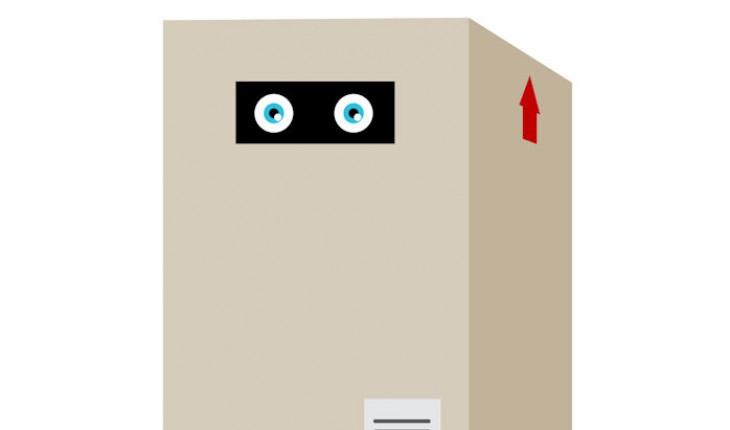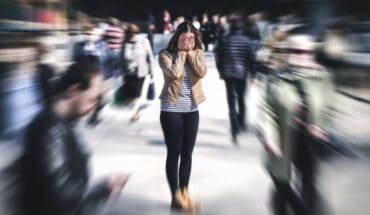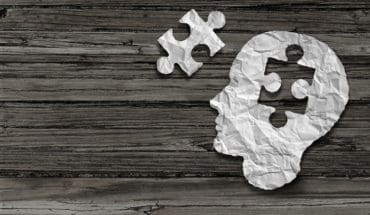Until recently, agoraphobia was defined as a fear of open spaces. It now also includes several other related fears such as a fear of entering shops, fear of crowds and public places, or of travelling alone on trains, buses or aeroplanes. It also includes the anxiety associated with being unable to reach a place of safety quickly.
Agoraphobics are not necessarily afraid of open spaces themselves, but tend to suffer panic attacks in response to the idea of being in an embarrassing or difficult situation with no escape route, and no certainty of reassurance and help. A panic attack is an unpredictable attack of intense fear and anxiety.
Agoraphobia usually develops between the ages of 15 and 35
Symptoms can be one or more of the following: shaking, rapid heart beat, intense sweating, chest pain, difficulty breathing, feelings of choking, nausea, dizziness, feelings of losing control, fear of fainting and fear of dying. Some agoraphobics may experience little anxiety because they can avoid the situations that cause their phobia. Agoraphobia is also linked to some other conditions like depression and obsessive compulsive disorder.
Many people develop agoraphobia as a result of a panic disorder
It appears that some genetic factor, in combination with environment, may be responsible for vulnerability to this condition. Sufferers may also have brain and biochemical abnormalities.
Substances that can trigger panic attacks in susceptible people include caffeine (generally five or more cups of coffee are required). Hyperventilation and breathing air with a higher-than-usual level of carbon dioxide can also trigger panic attacks in people with panic disorder.
How is it diagnosed?
Given the physical nature of symptoms and the possibilities for misdiagnosis, it is critical that any underlying medical disorders be ruled out. Cardiovascular, endocrine, respiratory, neurologic, and substance abuse disorders may be suspected and can coexist with panic disorders. Diagnostic tests will done depending on the symptoms.
All the following criteria should be fulfilled for a definite diagnosis:
- The symptoms must be due to anxiety and should not be secondary to other symptoms, such as delusions or obsessions
- The anxiety should occur mainly in at least two of the following situations: crowds, public places, travelling away from home, and travelling alone
- Avoiding the situation where anxiety occurs must be a prominent feature.
Treatment:
Cognitive-behaviour therapy (CBT)
CBT helps a person to change certain ways that they think, feel and behave. It is a useful treatment for various mental health problems, including phobias. CBT is usually done in weekly sessions of about 50 minutes each, for several weeks. Patients may be asked to keep a diary of their thoughts which occur when they become anxious.
Exposure therapy
With agoraphobia, the therapist will usually help the patient face up to feared situations gradually. A first step may be to go for a very short walk from home with the therapist who gives support and advice. Over time, a longer walk may be possible, and then a walk to the shops, then a trip on a bus, etc. This technique of behaviour therapy is called ‘exposure therapy’, where the patient is exposed more and more to feared situations, and learns how to cope.
Antidepressant medicines
These are commonly used to treat depression, but also help to reduce the symptoms of phobias, even if you are not depressed. They work by interfering with brain chemicals (neurotransmitters) such as serotonin which may be involved in causing anxiety symptoms. SSRI antidepressants (selective serotonin reuptake inhibitors) are the ones most commonly used for anxiety disorders. A combination of cognitive-behaviour therapy and an SSRI antidepressant may work better in some cases than either treatment alone.
Benzodiazepines such as diazepam are sometimes called ‘minor tranquilisers’. They work well to ease symptoms of anxiety. However, they are addictive and can lose their effect if taken for more than a few weeks.
- Christmas Is for All - 19th December 2025
- Intense influenza season driven by new strain - 19th December 2025
- KFSHRC Develops Novel Technique to Treat Inner Ear Disorders - 19th December 2025







